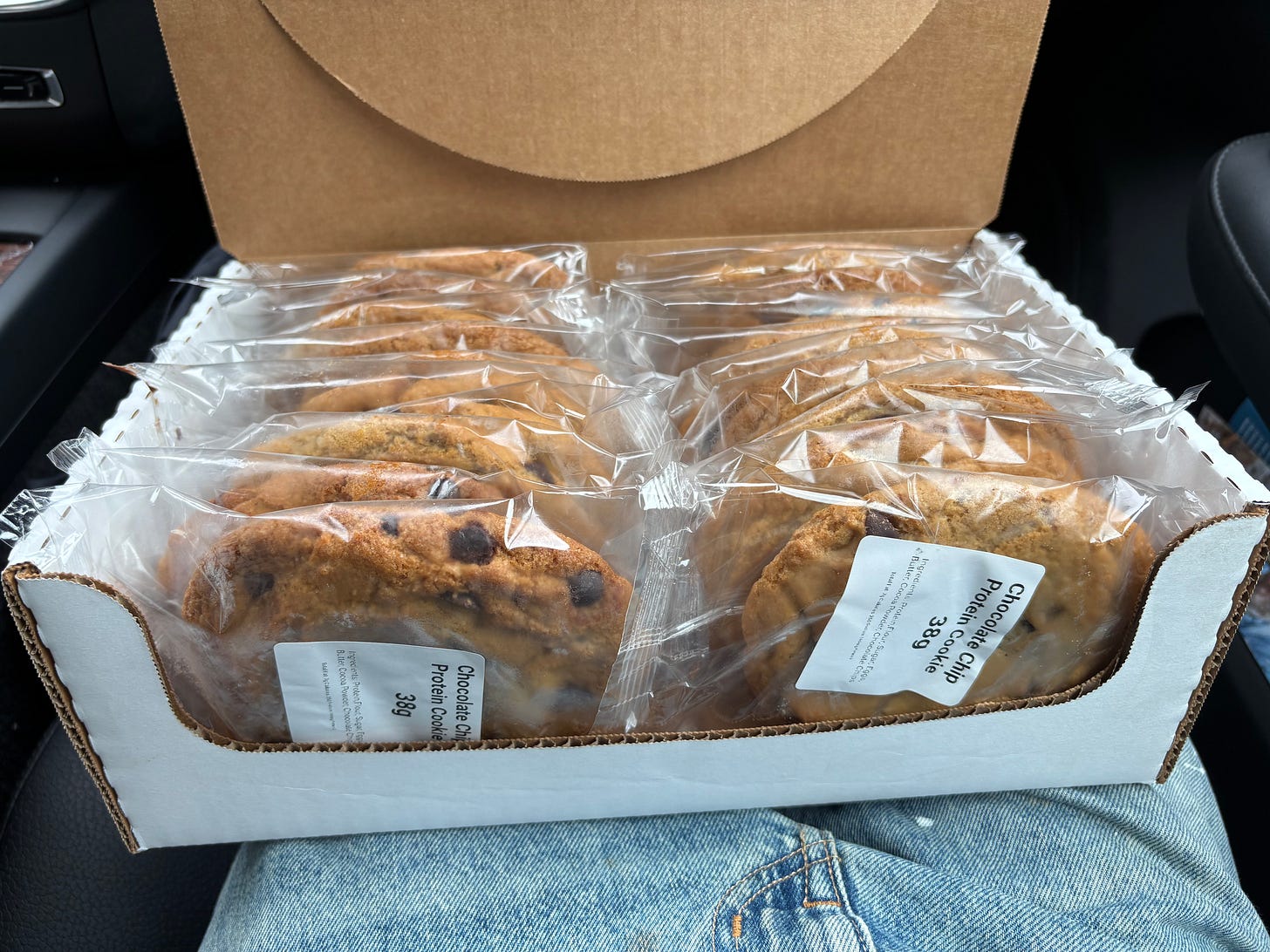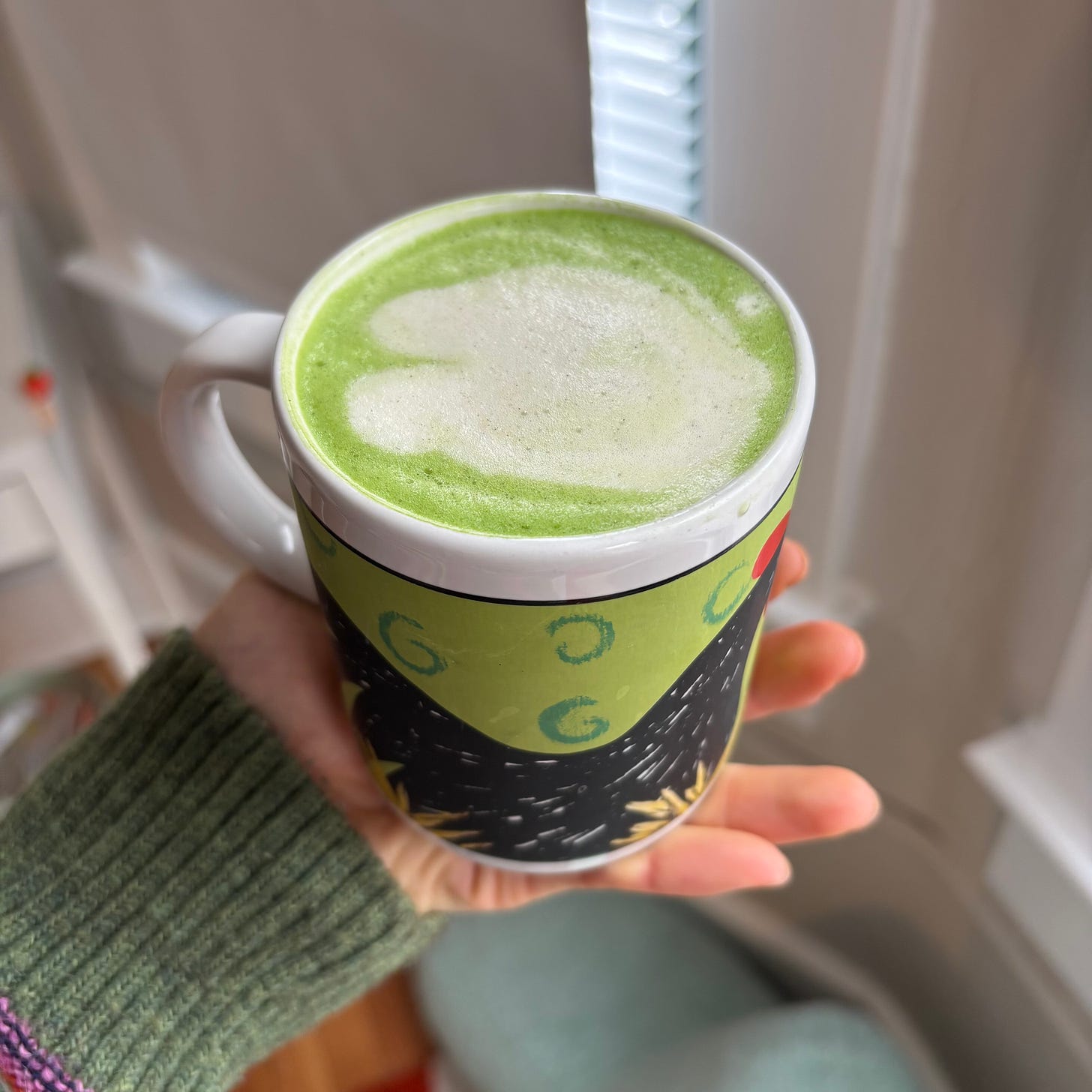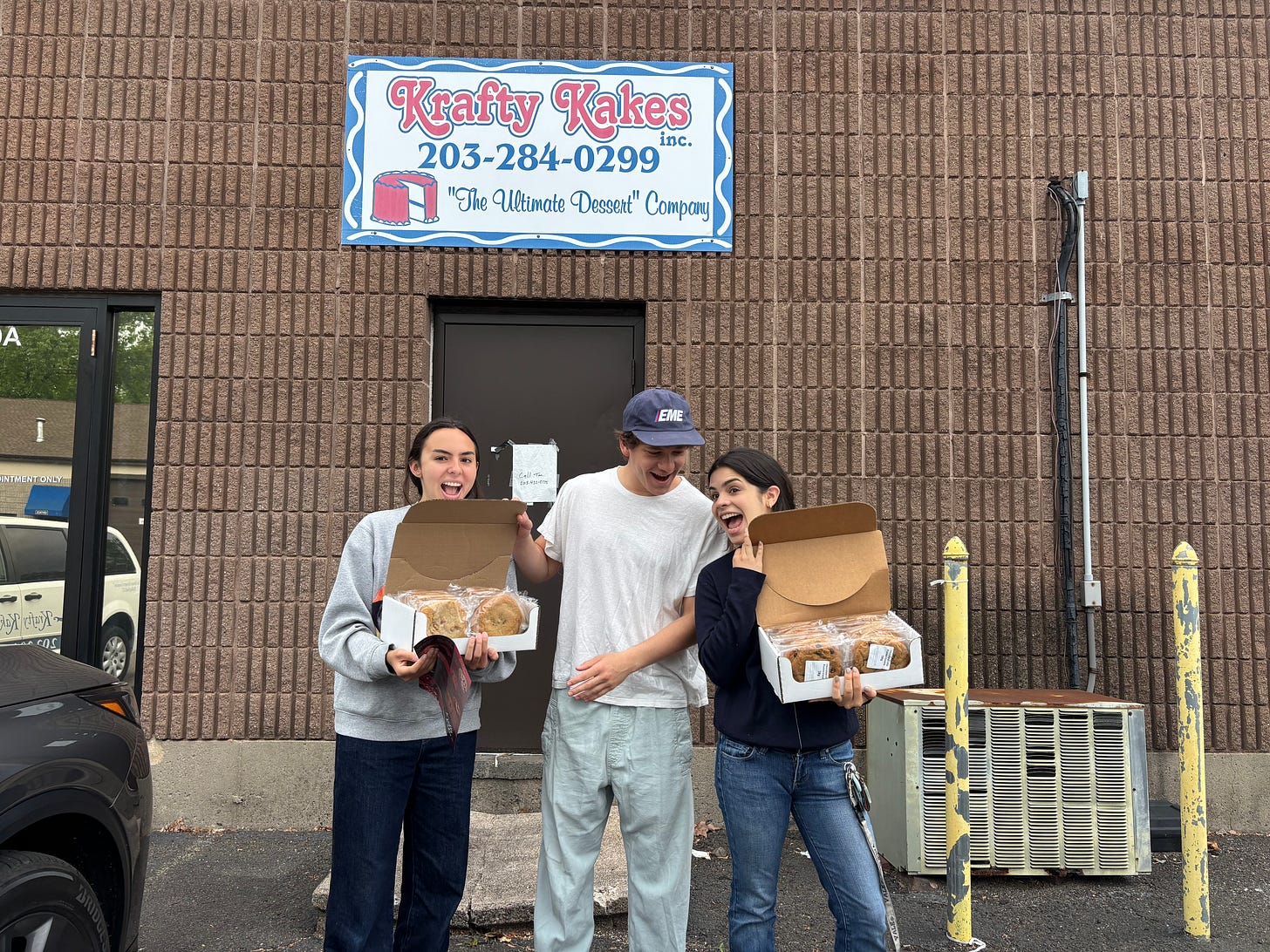Inside the 38g protein cookie factory
Investigations into a Chobani recipe change and how the "world's greatest" protein cookie gets made
In a dream world, I’d eat like Emily Mariko and subsist off of the farmers’ market. But because I live in the real world and am often tempted by shoppy shops and novelty items, I consume my fair share of processed foods. Beyond their accessibility and chemically-engineered tastiness, I am also fascinated with the purpose that processed foods serve (creating a perfect latte, refueling the body after a grueling workout) and wonder if achieving a desired effect (milk-foam, muscle) outweighs the importance of the alternative being whole or organic. Today, I present two investigations into food mysteries that have been itching at me. They happen to be on milk and cookies.
1. My Chobani oat milk doesn't froth anymore
All year, I’ve been using Chobani’s original oat milk to make my morning matcha (the ritual I treasure above all others). After sampling all the options in the grocery store, I became loyal to Chobani because it tastes the best, and more importantly, it produces a lovely, foamy froth. Or at least it used to.
After I graduated college in mid-May, I returned home to New York. I slept soundly in my childhood bed. In the morning, I walked to the kitchen and started making my matcha latte with the half-finished Chobani oat milk in the fridge (I’d also converted my family). When the electric frother slowed to a halt, the milk had not expanded at all in volume. It looked exactly the same, except for micro bubbles on the outer edges.
In case I had received a bad batch, or the milk had turned (can oat milk even turn?) while I was at school, I bought another carton from the store. The next day, the same thing happened. I was deeply confused. So, I typed into my browser, r-e-d-d-i—
Faithfully, Redditors proved to me that I am not crazy nor have I ever had an original experience. In the subreddit r/dairyfree, user @made-u-look posed the question: did they change the recipe?
THANK GOD, other people were experiencing this! One user compared ingredients between the old carton and the new one and found that the updated formula lacks Dipotassium Phosphate. When another user called a Chobani representative, they confirmed that the recipe had changed because people asked for the additive to be removed. A quick Google search tells me that Dipotassium Phosphate is a water-soluble salt that acts as a buffering agent in food processing to maintain pH and stabilize proteins. In oat milk, it helps to prevent splitting and improve foaming. It’s generally recognized as safe by the FDA. In other words, DiPho (my nickname) is what made Chobani oat milk superior to other milks that resembled sweetened oat water.
In an email reply, a Chobani rep said to a third Redditor inquiring about the recipe change:
“Thank you for reaching out. There has been a growing demand for clean labels, quality, and transparency in the foods people eat, and we here at Chobani couldn’t agree more! We’re excited to re-introduce Chobani® Oatmilk made with only natural ingredients. By making this shift, we are not only improving the quality of our offerings, but focusing on using ingredients that align with the desire for simple, plant-based options.”
I just wish Chobani had announced the recipe change before I bought a brand new one. I could not care less if my oat milk has an extra chemical that makes it good, in fact, I welcome it! I think people are too fixated on the ingredient labels on their milk cartons when really, they should zoom out. If your diet is primarily fruits and vegetables and protein and whole grains, a little DiPho won’t kill you. It might even make you happier.
Please don’t tell me that everyone is going back to cow milk. Whole milk tastes like the grass the cows graze, and it makes my stomach hurt :(
2. I don’t understand how this cookie has 38 grams of protein in it
Good Nature Market, a deli/grocery lovingly referred to as “G Heav” by Yale students, keeps a box of cookies near its check out counter. In the mornings, the plastic-wrapped, chocolate chip mega-sized pucks are piled on top of each other. In the evenings, there are only a few left. One cookie sells for $4.99. Would you pay five dollars (plus tax) for a convenience store cookie? What if it contained 38 grams of protein?
The nutritional label on the cookies look homemade, and I’ve wondered many times if the FDA has actually checked the contents for accuracy. How is it even possible to fit 38 grams of protein in a cookie?
To find out, Jackson, Karela, Isa, and I drove thirty minutes to Wallingford, Connecticut, where Krafty Kakes manufactures its baked goods. We pulled up to an empty lot with a row of brown-bricked, rectangular buildings. We identified our target by a small plastic sign for “The Ultimate Dessert” Company. The front door was locked, but there was a sign that had “Call Tom” scrawled in pen, with a phone number below. Jackson called Tom. He didn’t pick up. Jackson called again.
Jackson explained that we were big fans from Yale, and we wanted to check out the place where the cookies get made. Tom said it wasn’t really meant for visitors, it was more of a manufacturing joint. But did we have cash? For $100, he’d give us two boxes of cookies, chocolate chip and peanut butter. Jackson said yes. Five minutes later, Tom emerged from the bolted door. He had bright blue eyes, and seemed eager to go back inside. We pestered him with questions.
Us: How do you get so much protein into these cookies?
Tom: I can’t tell you that. We use a special vanilla protein powder.
Us: How long have you been in business?
Tom: 40 years. We make most of the baked goods in New Haven.
Us: Do they all have this much protein?
Tom: No, they’re just regular cakes.
The protein cookies are only a small part of the Krafty Kakes baking universe. But they keep churning them out because people are obsessed with them, especially now that everyone is maximizing their protein intake. Tom said that if we ever wanted more, we could call him and collect our cookies straight from the source. There were 20 in each box, which comes out to $2.50 per cookie. G Heav charges double. And because we paid in cash, there was no tax.
We opened one of the peanut butter cookies on the car ride home. It was still cold from the fridge it had been sitting in. It was chewy, nutty, moist (sorry!). There were caramel-colored chips mixed into the batter. I’ve tried a lot of different protein-enriched products, and most of them are disgusting. Krafty Kakes claims to have double the amount of protein than your average grocery-store-checkout offering. It has 10g more protein than the illustrious David bar, which I find chalky and inedible. The crazy thing is that Tom’s cookies taste so good, I would eat them if they had the nutritional breakdown of a normal cookie.

Though Tom seems like a nice man, I am skeptical that these cookies actually contain 38g of protein. I guess that’s between him and God. What I do know is that they sell out week after week. Someone is believing in them, and that may be enough.
Let me know if you want more letters like this in the future. Happy summer!!!










I CANT BELIEVE U INVESTIGATED PROTEIN COOKIE ARDEN 🙏🙏😭😭
So people are mad that there was a stabilizing agent in their fake milk? Like do you know how food processing works?